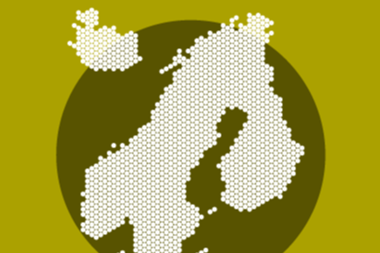Länsförsäkringar Liv, the Swedish life and pension insurer, has set out to boost its solvency levels by asking its customers to agree to new contracts without guarantees.
So far, only 10,000 of its 200,000 customers have agreed.
Instead of guarantees, Länsförsäkringar is also now offering lower fees, a move that has increased its solvency ratio by 1.2 percentage points to 118%.
During the first three quarters of the year, guaranteed product performance was down by 3.9%, while its new product with lower guarantees returned 0.8%.
Länsförsäkringar Liv is not the only company struggling with guaranteed products.
Its rival Handelsbanken Liv had to top up its guaranteed products with SEK16m (€1.8m), as performance failed to cover the guarantees agreed over the third quarter.
The guarantees are between 3% and 5%, and, as long as interest rates remain low, the situation will remain.
Handelsbanken has worked to move customers out of guaranteed products for some time now.
It has SEK11bn in these types of products, SEK57bn in fund products and SEK16bn in other types of insurance products.
AMF, another life and pension provider, returned 5.9% over the first three quarters, while its solvency ratio increased to 221%, up from 183% last year, putting it in a better position than many of its competitors when dealing with guarantees.
Alecta, meanwhile, returned 6.6%, with a solvency ratio of 174%, compared with 134% at the same time last year.
Alecta’s main pension product, Alecta Optimal Pension, returned 12% over the period.
Elsewhere, the life and pensions business of SEB, the Swedish banking group, saw premiums increase by 14% to SEK23bn, with its unit-linked business assets under management at an all-time-high at SEK148bn as a result of new clients and rising stock markets.
At the same time, SEB Trygg Liv Gamla, its traditional guaranteed product, returned 6.6%.
The solvency ratio increased to 192% from 166%.
Bucking the trend of reduced guarantees, SEB Trygg Liv Gamla increased guarantees to 7% before taxes and fees from 1 October.
At the same time, life and pension business of Nordea, the Nordic banking group, saw a rise in premiums of 23%.
Similarly, Swedbank Försäkring, the life and pension insurance business of the banking group, saw premium income increase by 8%, with assets under management increasing by 11% to SEK113.8bn.
Its average return for fund customers was 9.6%.
Lastly, PP Pension, the pension fund for the press and media, reported returns of 4.4% for the three quarters to the end of September.


























No comments yet